From Assessment to Angler: Continual Research Ensures Lake Erie Remains a Beacon of Freshwater Fishing
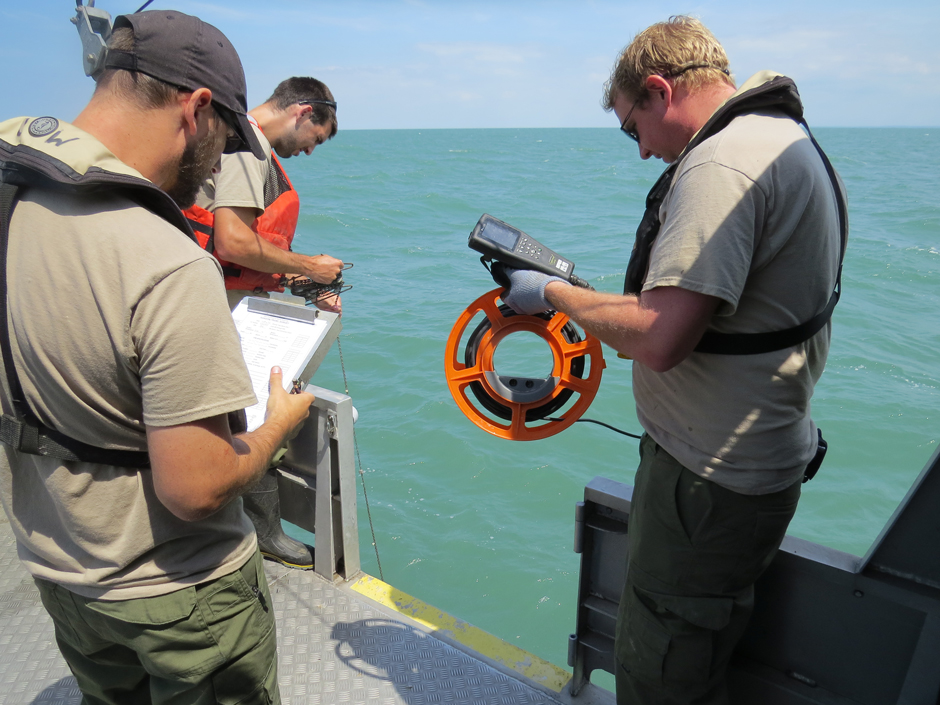 The Sandusky Fisheries Research Station records temperature and dissolved oxygen profiles during monthly bottom trawl surveys. (Credit: Ohio Division of Wildlife)
The Sandusky Fisheries Research Station records temperature and dissolved oxygen profiles during monthly bottom trawl surveys. (Credit: Ohio Division of Wildlife)Lake Erie is well known for its abundant recreational fishing. Anglers come from across the country to try their luck at the “walleye capital of the world” and search for other freshwater species, such as bass, perch, and steelhead trout.
As one of the world’s largest freshwater fisheries, much effort is made behind the scenes to maintain fishing opportunities for visitors to enjoy year after year, efforts that often go unnoticed by the public.
One of the lake’s most important economic and tourism centers is the city of Sandusky, home to the Sandusky Fisheries Research Station. As part of the Ohio Division of Wildlife, the unit serves as a base for assessing fish populations and managing harvest with partner agencies from around Lake Erie. Without the work done by these biologists, the recreational opportunities that make Lake Erie the freshwater fishing beacon that it is, likely would not exist.
“When the average angler opens up the fisheries regulations each year […] those regulations are tied directly to what we see with fish populations,” explains Eric Weimer, the Fishery Biologist Supervisor at the Sandusky Fisheries Research Station. “Things [in the regulations] don’t change randomly, there’s a lot of thought, and there’s a lot of data analysis and science that goes into any regulation changes.”
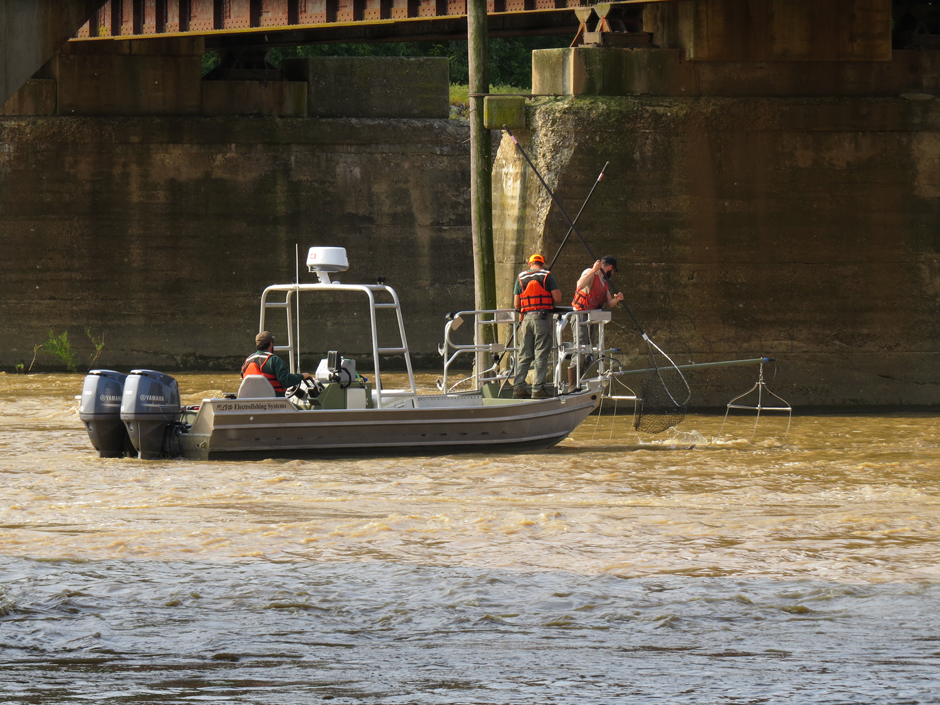
Shallow water electrofishing allows for a more targeted approach to gathering population data. (Credit: Ohio Division of Wildlife)
Weimer has worked at the research station since 2005. After receiving his master’s in fisheries science from South Dakota State University, Weimer landed on the shores of Lake Erie.
He started as a fish biologist and worked on a variety of different assessment and research projects, from trawling and electrofishing to lake sturgeon restoration and invasive species removal, before becoming a supervisor.
At the research station, Weimer and his team are responsible for collecting data on adult fish populations, young fish hatch strength, and annual harvest. Surveys such as trawling and electrofishing are vital for understanding how populations of different fish species vary from year to year.
“We look at Lake Erie fisheries like managing a bank account,” states Weimer. “We have fish that are being removed from our population and fish that are entering the population. And we then use the estimates of the population size and health to regulate harvest.”
Environmental Monitoring Equipment Used in Lake Erie
Fish populations also depend on the health of the ecosystem around them, which is affected by both biotic and abiotic factors. While methods such as electrofishing are useful for nearshore research, the research station also collects data on water quality. Using a YSI ProDSS multi-parameter water quality meter, Weimer and his team can collect data on parameters such as salinity, dissolved oxygen, and chemical pollutants.
Beyond understanding the physical makeup of the habitat where Lake Erie’s fish reside, the research station also looks at the abundance of zooplankton and phytoplankton. Results from the fish assessment surveys and microorganism abundance studies are compiled together by biologists and shared with partner agencies.
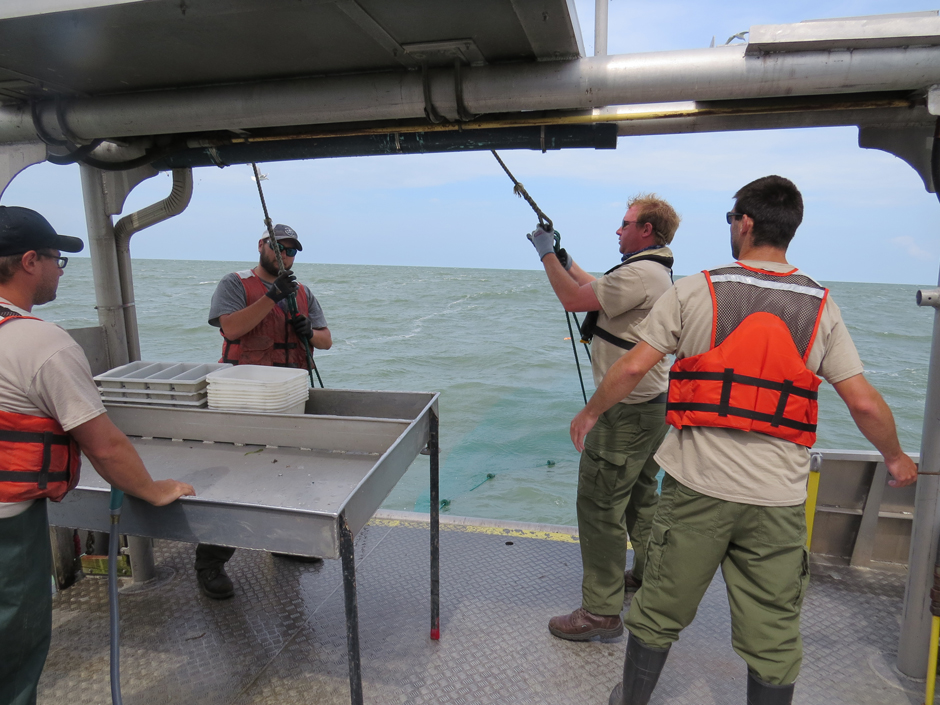
Trawls are funnel-shaped nets that are towed at the bottom of Lake Erie to catch young and small fish. The Sandusky crew use hydraulics to lift the trawl and place the catch in the sorting table. (Credit: Ohio Division of Wildlife)
Once the dynamics of fish populations are understood, Weimer and his team collaborate with other agencies around the lake to make management decisions regarding safe harvest.
“Our core responsibility is to ensure we don’t overharvest Lake Erie fish populations,” explains Weimer.
When they are not carrying out assessments regarding fish populations, the research station also researches questions related to fish behavior and responses to threats. These secondary projects may include tracking fish movement with radio telemetry or observing a certain species’ response to dam removals. Weimer and his team use monitoring and research to learn about the fish populations in Lake Erie and make data-driven decisions to protect our fisheries.
Partnerships on Lake Erie
Sandusky is not the only population center affected by Lake Erie’s fisheries. From Cleveland to Buffalo and across the border to Ontario, the fourth largest lake in the U.S. requires collaboration from around the shores. Weimer and his team work with partners in Michigan, Pennsylvania, New York, and Ontario.
Weimer stresses that management decisions must be made in collaboration with other agencies, as the health of the lake and its fish populations are reliant on the health of all its sections and tributaries.
When similar environmental quality and fish species data are combined from these different jurisdictions, a fuller picture is created, and better management decisions for anglers across the lake can be made.
“Managing the lake fishery is really important, not just to Ohioans, but also to all of our partner states and the province of Ontario, who all share a piece of Lake Erie,” explains Weimer. “The interagency process is a large part of what we do.”
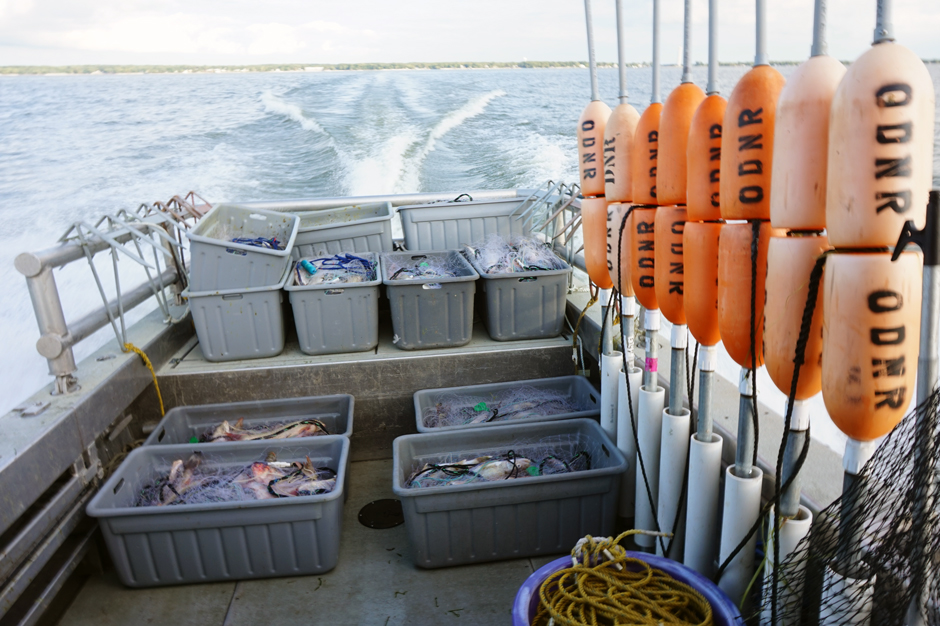
Different survey gears collect specific pieces of information on fish populations, like this gill net catch that collects data on adult walleye. (Credit: Ohio Division of Wildlife)
Lake Erie’s Fishery and the Economy
The popularity of Lake Erie fishing has immense benefits for the public. Healthy fish populations increase the quality of recreational fishing opportunities for anglers and also bolster the economies of cities and towns along the lake.
Weimer recognizes that the work done at the research station does not exist in a scientific vacuum and that their work on Lake Erie helps provide livelihood and entertainment for thousands of people around the shoreline.
“The value that our Lake Erie fisheries provide to Ohioans and to the citizens of other states, it’s really hard to quantify,” states Weimer. “It is billions of dollars of benefit to the Ohio economy […] bait and lures to go out and fish, but also the fuel that they’re using, the hotels and the restaurants that are catering to their needs while they’re there.”
The popularity of Lake Erie as a fishing destination is what makes the Sandusky Fisheries Research Station’s job so vital. Anglers must abide by fishing regulations that limit the harvest of certain fish species.
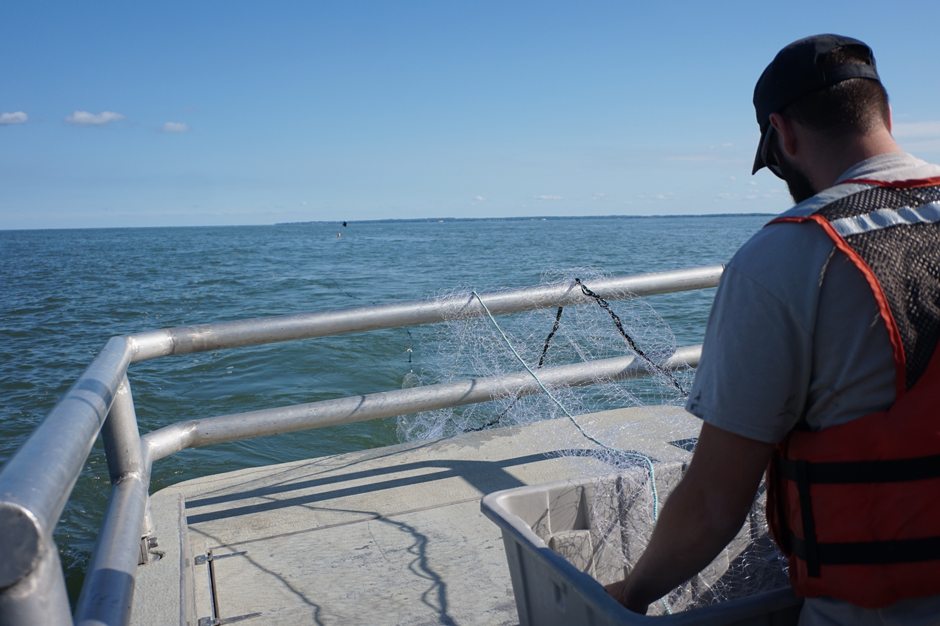
A member of the Sandusky Fisheries Research Station setting a gill net. (Credit: Ohio Division of Wildlife)
Conclusion
These numbers are not random but instead the result of countless hours of research, monitoring, and data compilation by the Sandusky Fisheries Research Station and other agencies around the lake. Weimer sees management decisions regarding harvest numbers as one of the most important jobs his unit does as well as being one of the greatest benefits to the public.
“We have to make sure that we protect the populations while we have good hatches so that when we don’t have good hatches, it’s still a sustainable fishery,” Weimer explains. “So by restricting harvest, using regulations for our recreational fishery, and by using quotas, we definitely make sure that we’re staying within a safe level of harvest and that these fish can contribute to recreation and to food for anglers for many years.”




0 comments